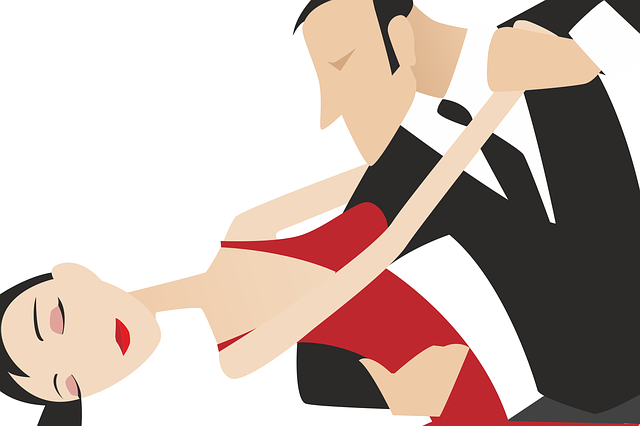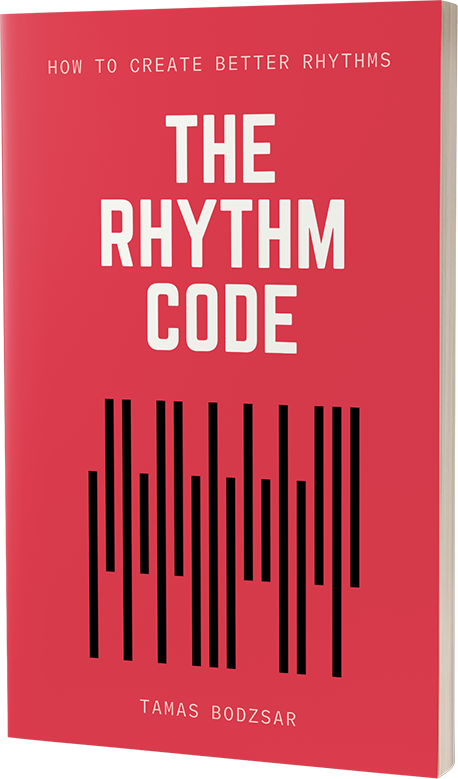
I write Cuban style Salsa (timba) songs for my band, and I would say I have a competitive advantage over other genres: it’s probably the most danceable style of music. You cannot think about Cuban salsa music without associating to dance.
We had hundreds of concerts for the past few years, and I can tell you that I have never seen a concert where there wasn’t AT LEAST a few people who were dancing to our music. People can’t stand but to move when they hear Salsa music.
But what makes a song danceable?
It’s not just the genre, because we know a lot of pop songs that are danceable and they have nothing to do with Latin music. Think about the song “Happy” by Pharrell Williams.
So I sat down to figure out the answer to this question, and here is the conclusion.
1. The Rhythm Code™
Before I started to write my own songs, I was studying Cuban music because I wanted to understand how they create those complicated rhythms. By “studying”, I mean I analyzed many songs, mostly the rhythm of the bass, the horns, the drums, etc.
I wanted to find a system to create my own songs. This music sounds really complicated, but I knew there must be a system.
And I found it. I found a hidden system in the rhythm of these Cuban songs, which I named “the Rhythm Code”. I can write Cuban style salsa songs because I use the system of the Rhythm Code.
But later I also started to analyze pop songs, and songs from other popular genres, and I realized that it’s not only Latin music. The Rhythm Code is everywhere.
I created a small list of danceable songs, you can listen to them here:
Here are all the titles:
Taylor Swift – Shake It Off
Justin Timberlake – Can’t Stop The Feeling
Shawn Mendes – Stitches
Coldplay – Adventure Of A Lifetime
Michael Jackson – Billie Jean
Pharrell Williams – Happy
Imagine Dragons – On Top Of The World
Ellie Goulding – Burn
Red Hot Chili Peppers – Dark Necessities
James Brown – Get Up
Beyoncé – Single Ladies
Tower Of Power – Soul With A Capital S
Sean Paul – No Lie
Rita Ora – Your Song
Diana Ross – I’m Coming Out
What’s common between these songs? Two things:
1. They are all danceable.
2. They ALL use the Rhythm Code.
Yes, this is what’s common between the song Happy and a salsa song: they both use the Rhythm Code. And this ONE of the reasons they are both danceable.
If you ask people what makes a song danceable, they will say “rhythm” – Yes, but I would say it’s GOOD rhythm.
But how can you create good, danceable rhythms? The answer to this question is: The Rhythm Code, which is the first chapter of our songwriting course. (HERE)
2. Predictable metre
But of course, it’s not just good rhythm. It’s also predictability. There are many different metres for dance music, for example, the 6/8 Afro Cuban beat, the 3/4 waltz. And people can even dance to 5/4 too. But the most danceable metre is the 4/4.
What’s common in all of those, regardless of how popular they are, that they are all predictable because they don’t change the metre through the song.
This means that if you change the meter in the song, it won’t be predictable, and it will lose its danceability.
And the 4/4 is the best choice for danceable songs because probably 99.99% of the songs are in 4/4, therefore people EXPECT any music to be in 4/4. Especially the average non-musician listener.
By the way, the Rhythm Code is also a predictable “system”, this is one of the reasons it makes a song danceable.
3. Clear feel of the beat
Even though I write salsa songs, my first album was very experimental, in terms of rhythm and arrangement. If you listen to this song from the album, you will understand what I’m talking about. Here: https://open.spotify.com/track/7i1UEZAvncGCCvMvKe3MSZ
A “salsa DJ” from London sent me a message that this is the most innovative Latin album that he ever heard. And musicians also LOVE these songs. Whenever we invited guest/session musicians to a concert, they were amazed by the grooves and the arrangements in the songs.
But the problem is, musicians have different preferences in music than the average listener. Musicians like complicated and sophisticated musical arrangements. Our preference is not dance, but to stimulate our ears and our brain with music.
And as we were playing these songs at the concerts, I saw that people stopped dancing or they were confused because they lost the beat. These arrangements were too complicated for an average, non-musician listener.
If your music is too simple in rhythm (for example, every note is on the downbeat), it will sound stupid and BORING. At the same time, if the arrangement is too complicated (for the average listener), they will lose the feel of the beat.
You have to find the right balance between making your rhythm and arrangement interesting enough, but not too complicated.
4. The Right Tempo
Of course, some of the dance styles are slow, for example, the slow-waltz. But we all know that a song must reach a certain tempo to become danceable.
And you don’t even need to be on the dance floor in a club. A song is “danceable” if you are sitting in a car and you start to move your legs or your shoulders. You won’t start to move when you hear a slow song.
So the song must be in a medium tempo or higher to become danceable.
If we look at the playlist above, the slowest danceable song is probably “Happy” by Pharrell Williams. Anything below that tempo is too slow to be danceable.
5. Constant Volume
Listen to the song “Dark Necessities” by Red Hot Chili Peppers. It starts with a low volume intro, and then the bass starts to play a really rhythmic, danceable groove. A higher volume means a higher energy level.
So you can’t change the volume if you want to create a danceable song because if your song goes down from a higher volume to a lower volume, it will lose its energy, and it won’t be as danceable. (In fact, most songs build up higher energy levels as we go towards the end of the song.)
Most of the times the chorus has the highest energy level in the song, but if you want to create a REALLY danceable song, you need to start the song on a medium/high energy level and maintain that level throughout the song or put the chorus on an even higher energy level.
Conclusion
1. Use the Rhythm Code, because it gives you the formula of how you can create better, danceable rhythms.
2. Keep the same meter throughout the song so it will be predictable. Best choice: 4/4
3. Don’t overcomplicate the arrangement. Complicated arrangements are cool if your audience is musicians, but not good for danceable songs!
4. Find a medium or faster tempo.
5. Keep the volume medium or higher and maintain it throughout the song.
The Secret Pattern Behind Successful Songs
Get the eBook for $7

